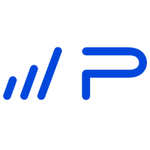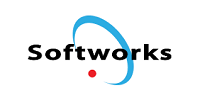Description

Openpath

SALTO
Comprehensive Overview: Openpath vs SALTO
Openpath and SALTO are both prominent companies in the access control industry, offering innovative solutions that cater to various market needs. Here's an overview of their primary functions, target markets, market share, user base, and key differentiating factors:
a) Primary Functions and Target Markets
Openpath:
Primary Functions:
- Mobile Access: Openpath emphasizes mobile-based entry, allowing users to unlock doors using smartphones via Bluetooth, Wi-Fi, and LTE.
- Cloud-Based Management: Offers a cloud-based platform enabling remote management and real-time access control.
- Scalability and Integration: Supports scalable solutions that integrate with existing security systems and smart building platforms.
- Touchless Entry: Provides touchless, hands-free access solutions, which have become increasingly important, especially post-pandemic.
Target Markets:
- Commercial real estate
- Enterprise offices
- Small to medium businesses
- Educational institutions
- Healthcare facilities
SALTO:
Primary Functions:
- Wireless and Keyless Access: Specializes in wireless, keyless access control systems, including networked, standalone, and cloud-based solutions.
- Advanced Locking Solutions: Offers electronic locks, cylinders, and readers designed for various use cases.
- Data on Card Technology: Uses RFID, NFC, and Bluetooth technologies for secure, decentralized access management.
Target Markets:
- Hospitality
- Commercial real estate
- Educational institutions
- Government facilities
- Healthcare sectors
b) Overall Market Share and User Base
Both Openpath and SALTO are influential players in the access control market, but they differ in terms of technological focus and market penetration.
Openpath:
- Market Share: Relatively newer in the market but has rapidly gained recognition due to its mobile and cloud-native approach.
- User Base: Appeals to tech-savvy organizations and modern workplaces looking for seamless, integrated security solutions.
SALTO:
- Market Share: Established player with a significant international presence, known for reliability and innovation in wireless locking solutions.
- User Base: Extensive, covering numerous industries globally, with a strong foothold in hospitality and large-scale facilities requiring robust access control.
c) Key Differentiating Factors
Technology and Innovation:
- Openpath focuses on smartphone-based, cloud-managed access with robust integration capabilities and touchless features.
- SALTO emphasizes versatile locking solutions, offering a broader range of hardware including electronic locks and wireless systems, along with its use of Data on Card technology for decentralized management.
Integration and Compatibility:
- Openpath is highly praised for its integration capabilities with existing building management systems, making it ideal for modern smart building environments.
- SALTO offers comprehensive solutions suitable for more traditional setups as well as modern applications, with extensive options for hardware customization.
Market Focus and Adaptability:
- Openpath targets tech-focused companies and sectors looking for modern, mobile-friendly solutions.
- SALTO serves a wide spectrum of industries, excelling in environments that require scalable and reliable physical security solutions.
In conclusion, while both Openpath and SALTO provide advanced access control solutions, they cater to different market needs based on their technological strengths and historical development. Openpath is known for cloud-based, mobile-centric access, whereas SALTO is recognized for its robust hardware and versatile applications across diverse industries. Their distinct approaches to security and integration are key for organizations when choosing between the two.
Contact Info

Year founded :
2015
+1 844-728-4247
Not Available
United States
http://www.linkedin.com/company/openpath

Year founded :
2019
Not Available
Not Available
United States
Not Available
Feature Similarity Breakdown: Openpath, SALTO
Openpath and SALTO are both prominent players in the access control industry, offering advanced solutions for securing physical spaces. Here’s a feature similarity breakdown for these two products:
a) Core Features in Common
-
Mobile Access: Both Openpath and SALTO offer mobile-based access solutions, allowing users to unlock doors through smartphone apps, leveraging Bluetooth or other wireless technologies.
-
Cloud Management: They provide cloud-based access management platforms, enabling remote control and monitoring of access points from anywhere with internet connectivity.
-
Integration Capabilities: Both systems support integration with third-party software and hardware, such as video surveillance, identity management, and building management systems.
-
Security Measures: Each system emphasizes robust security protocols, including encryption standards to protect data transmission and user credentials.
-
Scalability: Both are scalable solutions, suitable for various sizes of installations, from small businesses to large enterprises.
-
Real-time Monitoring and Alerts: They include real-time monitoring of access events and can send alerts or notifications for specific occurrences, like unauthorized access.
-
User Management: Both systems provide comprehensive user management features, allowing admins to add, modify, or remove user credentials and permissions easily.
b) User Interface Comparison
-
Openpath: Known for its intuitive, user-friendly interface, Openpath’s platform is designed to be easy to navigate, even for users with minimal technical expertise. The mobile app is sleek and offers straightforward functions for unlocking doors and managing access permissions.
-
SALTO: SALTO’s user interface is also designed for ease of use, with a focus on providing detailed access control management. The interface is generally considered to be slightly more complex than Openpath's, reflecting its strong emphasis on security details and extensive configuration options.
Both interfaces provide functionality for tracking and reporting access events but might differ in the way they present data and allow for interaction with access control processes.
c) Unique Features
Openpath:
- Wave to Unlock: Offers a unique feature that allows users to unlock doors with a wave of their hand, enhancing the touchless access experience.
- Flexible Pricing Models: Often praised for its flexible pricing structure, which can be an attractive feature for businesses looking for customizable financial commitments.
SALTO:
- Wider Range of Hardware: SALTO is known for its extensive range of locking hardware, including its own networked, stand-alone, and wireless lock series.
- Environmental Data Integration: They offer integration with energy management systems, allowing businesses to optimize energy usage based on access patterns.
Both Openpath and SALTO excel in offering robust access control solutions, but their unique features and interface styles might make one more suitable than the other, depending on specific business needs and preferences.
Features

Not Available

Not Available
Best Fit Use Cases: Openpath, SALTO
Openpath and SALTO are both prominent solutions in the access control industry, each with specific strengths that cater to different business needs and applications. Here's a breakdown of their best fit use cases:
Openpath
a) For what types of businesses or projects is Openpath the best choice?
-
Tech-Savvy Offices and Startups: Openpath is ideal for modern offices and tech companies that value seamless technology integration. Its mobile-first approach allows employees to unlock doors using their smartphones, making it a great fit for digital-first environments.
-
Small to Medium-Sized Enterprises (SMEs): Openpath's cloud-based platform is well-suited for SMEs looking for cost-effective, scalable access control solutions that require minimal IT support.
-
Multi-Tenant Buildings: The flexibility and remote management capabilities of Openpath make it perfect for buildings that house multiple tenants. Property managers can easily onboard new tenants and provide them with secure access.
-
Co-working Spaces: Given the dynamic nature of co-working spaces, Openpath's flexibility in granting and revoking access privileges on the fly is a significant benefit.
-
Businesses Prioritizing Mobile Access: Companies that want to offer their employees the ease and convenience of mobile access will find Openpath's mobile app and Bluetooth-enabled capabilities particularly attractive.
SALTO
b) In what scenarios would SALTO be the preferred option?
-
Large Enterprises and Institutions: SALTO's robust, scalable solutions are ideal for larger organizations that require a comprehensive access control system to manage multiple locations and a high volume of users.
-
Educational Facilities: Universities and schools benefit from SALTO's ability to manage complex access needs, including dormitory, classroom, and facility access, often necessitating both online and offline capabilities.
-
Healthcare Facilities: The security needs of hospitals and clinics, where sensitive data and expensive equipment are at stake, align well with SALTO's high-security standards and flexibility.
-
Hospitality Industry: Hotels and resorts can leverage SALTO's advanced electronic locking systems to provide guests with secure and convenient access to rooms and amenities.
-
Government and Public Sector: Organizations within the government and public sector that need stringent security measures and reliable access control systems often choose SALTO for its robustness.
d) How do these products cater to different industry verticals or company sizes?
-
Industry Verticals:
- Openpath tends to thrive in industries that prioritize innovation, flexibility, and cost-efficiency, such as tech, real estate, and co-working environments. It caters to industries that benefit from mobile and remote access capabilities.
- SALTO serves more traditional industries requiring high levels of security and comprehensive access management, like education, healthcare, hospitality, and government sectors.
-
Company Sizes:
- Openpath is more agile and budget-friendly for small to medium-sized businesses looking for an intuitive and easily adaptable access control system.
- SALTO is well-equipped for large organizations with its extensive range of hardware and integration options, making it suitable for enterprises that need to manage complex access scenarios across various locations.
In conclusion, while both Openpath and SALTO provide top-tier access control solutions, their optimal use cases depend on the specific needs of the business, such as size, industry, and technological priorities.
Pricing

Pricing Not Available

Pricing Not Available
Metrics History
Metrics History
Comparing teamSize across companies
Conclusion & Final Verdict: Openpath vs SALTO
Conclusion and Final Verdict for Openpath vs. SALTO
a) Best Overall Value: Determining the best overall value between Openpath and SALTO depends on the specific needs and priorities of the user or organization. Both products have their strengths, and the best choice varies based on factors like budget, integration needs, scalability, and user preferences. However, if the primary criteria are seamless integration with modern technology and scalability, Openpath might offer better overall value due to its cloud-first approach and robust integration ecosystem. Conversely, if enhanced door hardware options and flexible access solutions are more critical, SALTO could present a better value proposition.
b) Pros and Cons:
Openpath:
- Pros:
- Advanced cloud-based access control system with robust mobile app integration.
- Easily scalable and integrates well with various third-party systems and services.
- User-friendly interface with straightforward management and customization of access rights.
- Highly secure with features like remote unlocking and multi-factor authentication.
- Cons:
- Dependent on internet connectivity for optimal performance, which might be a concern in areas with unreliable networks.
- May require more significant initial investment in cloud infrastructure compared to traditional systems.
SALTO:
- Pros:
- Offers a wide range of hardware options, including electronic cylinders, locks, and padlocks, suitable for diverse environments.
- Allows both offline and online access control capabilities, providing greater flexibility in certain setups.
- Known for robust and reliable security hardware with a strong reputation in traditional access systems.
- Supports contactless credentials and provides a high degree of customization for different access scenarios.
- Cons:
- The system might be more complex to install and configure compared to purely digital offerings.
- Some users might find the software interface less intuitive than more modern, cloud-based ones.
c) Recommendations for Users:
-
For tech-forward companies that prioritize seamless integration with other digital systems, frequent software updates, and enhanced mobile capabilities, Openpath is an excellent choice. These users should value its ease of use, scalability, and cutting-edge technology.
-
For organizations looking to leverage robust physical security infrastructure and requiring flexibility between offline and online access control, SALTO might be preferable. These users should prioritize settings where a variety of entry methods and strong, hardware-focused systems are necessary.
Ultimately, it is recommended for users to conduct a thorough needs assessment, evaluate their existing infrastructure, and possibly engage in trials or demos with both products to see which aligns better with their specific operational requirements.
Add to compare
Add similar companies




